In 2020, when Ashipa Electric installed a solar + storage-based minigrid in an agrarian community in Nigeria, team leaders expected the system to lower power costs and reduce carbon emissions. But by offering residents access to clean, cost-effective energy, the hybrid system also revitalized the economy, elevated quality of life, and produced environmental benefits beyond all expectations.
A forest of palm trees extends beyond the horizon. Birds dart from tree to tree, rustling the fronds. Soft murmurs and chopping sounds emanate from a group of women gathered under the shade of a thatched roof to cut away the exterior of cassava roots. Beyond this, it is silent.
Instead of noisy diesel-powered generators running as in years past, homes and businesses are now powered by a 15 kWp solar array.
Lomiro, an off-grid community of 600 residents in Ogun State, South West Nigeria, is a peaceful place known for palm-oil production and cassava cultivation. For decades, residents and businesses in Lomiro relied on diesel or gas-powered generators.
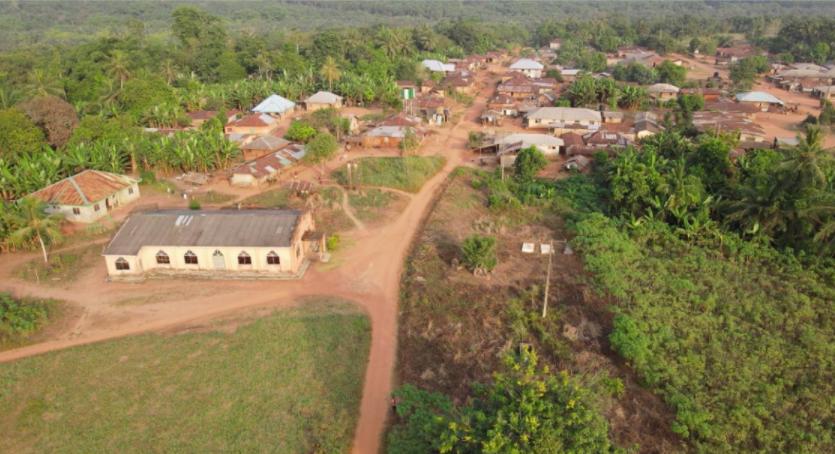
Over the years, the high cost of power—about 45 cents a kWh—coupled with ever-increasing fuel prices in Nigeria, made it difficult for businesses to succeed. This drove many entrepreneurs to seek opportunities elsewhere and prevented Lomiro from reaching its full economic potential.
“The lack of electricity in the community has tremendously reduced the commercial impact of Lomiro,” explains Olugbenga Ajala, P.E., founder and CEO of Ashipa Electric. “Farm produce like cassava and oil-palm are usually processed using locally invented machines, which reduces the quality and quantity, and increases both the production time and health risks. We hope our installed minigrid will be able to change how processing machines are used eventually.”
Some farmers who stayed in Lomiro chose to process their products by hand. However, manually processed products are often below quality standards, making them less desirable for export or foreign trade. Other small businesses were limited as well, since electricity plays a major role in the sustainable operations for food preparation, water and beverage cooling, shop-keeping, hair styling and powering electronics.
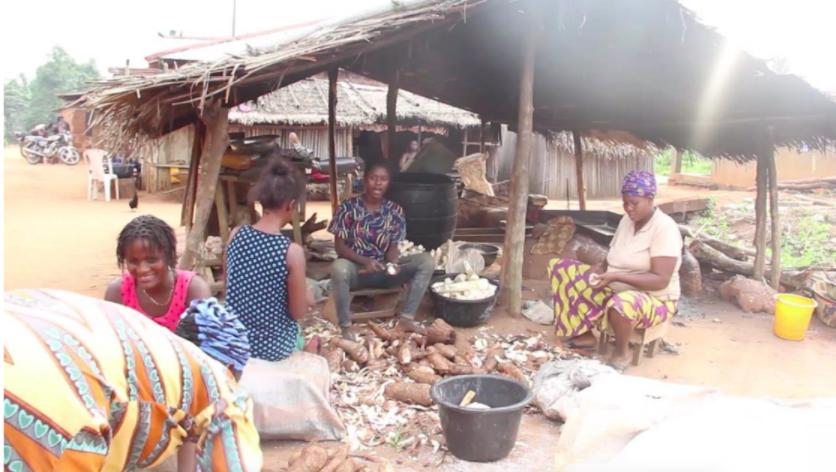
Minigrid Installation Key to Community Growth
In 2020 Ajala and the Ashipa Electric team identified Lomiro and several other communities as potential energy system recipients on a scouting trip to Ogun state, Southwest Nigeria. Ashipa Electric develops renewables-based power solutions for communities across Africa. The company hopes to help support universal electrification with clean technologies to encourage growth and protect the environment.
“Our core mandate is to identify rural communities with immense commercial potentials that lack access to sufficient electricity/energy to convert the potentials to wealth,” explains Ajala. “This is in tandem with our mission to empower communities through electrification.”
There’s significant potential for renewables-based systems across Africa. With its abundant natural resources, the International Renewable Energy Agency (IRENA) estimates that renewable energy capacity in Africa could reach 310 GW by 2030. Recent economic studies indicate that hybrid power systems such as renewables-based minigrids could help Africa build a climate-resilient, low-carbon economy in a post-pandemic world, aligning economic recovery with sustainable development and climate goals.
Nigeria is especially well-positioned for renewable energy development. Its abundant natural resources and sunny location make it prime for clean energy infrastructure, as does the current gap between energy supply and demand. Nigeria has 12,500 MW of installed generation capacity, but only 3,500 MW to 5,000 MW are typically available for transmission to the end-consumer. It also experiences a relatively high occurrence of technical and non-technical issues throughout the power supply value chain. Analysts suggest that renewables-based hybrid minigrids could help bridge supply and demand while offering the country’s 210 million inhabitants energy access.
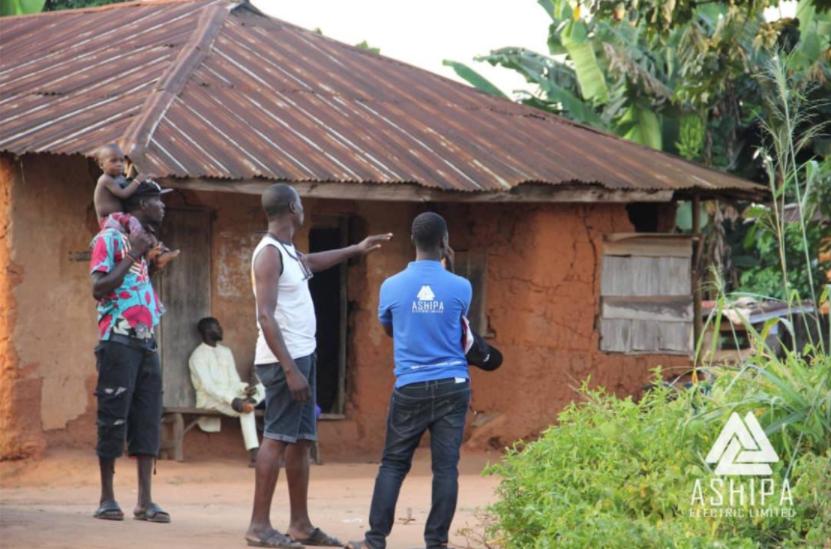
Ashipa Electric Selected in Techstars EnergyTech Alabama Accelerator Program
In 2020, Ashipa Electric was chosen as a beneficiary of the Techstars EnergyTech Alabama accelerator program. Each year, the program selects early-stage companies to participate in mentorship and investment opportunities. This funding made the Lomiro mini-grid project possible. The fact that the community did not have to incur the capital cost of building the solar generation and power distribution system made the decision to work with Ashipa Electric to install the mini-grid an easy one for local residents. However, the company gets its returns on the investment through electricity purchased by customers using installed prepaid smart meters.
The team from Ashipa Electric modeled the Lomiro minigrid using HOMER Pro and other software resources. The modeling revealed a combination of daytime and nighttime loads, so the team sized the system accordingly and chose appropriate solar and energy storage technologies to power the community during the needed day and night hours.
The system’s installation was not without challenges. Some community members were slow to accept the idea of a renewable energy system and resistant to adopt the technology. The Ashipa Electric team overcame this by engaging in community discussions and educating leaders and young residents on the advantages of a renewables-based energy system.
A shortage of skilled tradespeople in Lomiro also slowed project installation and increased installation costs. Ashipa Electric tries to employ local professionals and tradespeople in each of its electrification projects, but in Lomiro, outside engineers and contractors were brought in to complete the project.
The microgrid is a DC-coupled system with a total panel size of 15kWp made up of 39 units of 380W monocrystalline solar modules. The system is deployed with a 20kWh Lithium-ion battery accompanied by a 48V, 15kVA inverter, and managed by Ashipa Electric’s custom-made micro-grid management software, Ashgrid.
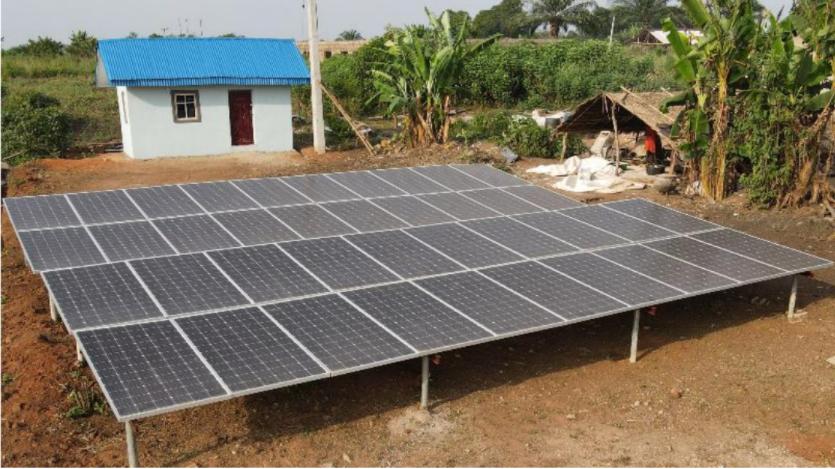
Immediate Economic Benefits
Today, electricity costs 30 cents per kWh — down from 45 cents after the installation of the micro-grid, which saves about 33% of daily operating cost. Energy generated from the micro-grid is distributed by a single-phase system and each customer is metered by a single-phase smart meter. This makes customer management seamless, transparent, easy and effective.
Access to clean and reliable electricity has allowed the community to transition from diesel- or gasoline-powered equipment to solar-powered processing machines. The move to solar power has reduced the cost of energy required for food production and improved the quality of processed foods, positioning the community to export finely processed foods.
Long-Term Community Benefits
Access to affordable and reliable energy has benefited the community in a number of ways. There has been a significant socioeconomic shift within the community. New businesses like cafes, cinemas and pubs have emerged, along with much-needed infrastructural development.
Abandoned projects such as federal and state roads have been resumed, reigniting hope of development and renewed prosperity. Lomiro’s now-flourishing economy has also attracted attention from government officials interested in supporting the community’s development.
Public health and safety have also improved, with electricity available to power streetlights and security lights. In addition, with the microgrid now powering pumps at several boreholes within the community, clean drinking water is now more accessible and affordable.
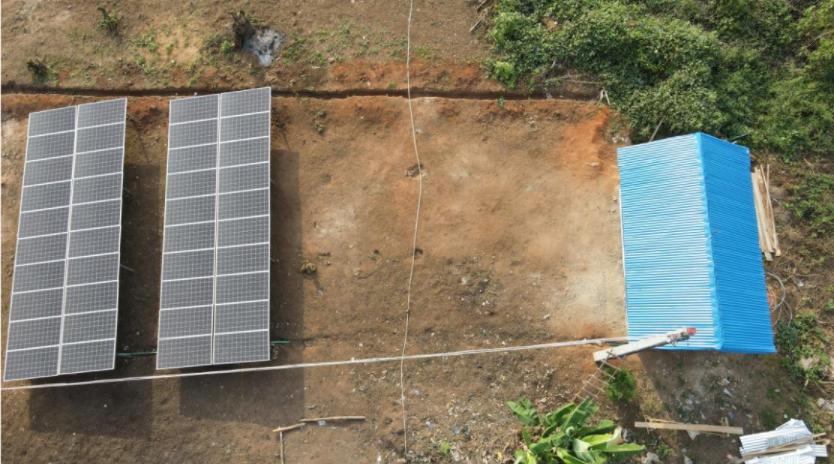
Renewables Reduce Noise and Improve the Environment
Since the minigrid’s installation, the community has experienced a dramatic reduction in the number of diesel and gas-powered generators and engines in operation. This has decreased noise pollution while reducing the community’s reliance on fossil fuels and lowering carbon emissions. Ashipa Electric estimates that each year the solar + storage mini-grid project offsets 17 MT of CO2 equivalent, or approximately 1,777 gallons of gasoline.
By offering residents access to clean, cost-effective energy, the Lomiro hybrid system has revitalized the economy, elevated the community’s quality of life, and provided ongoing environmental benefits–making evident the transformative power of access to clean, affordable energy.
Going forward, the Lomiro pilot project will serve as a model for future installations. In fact, Ashipa Electric has established strong relationships with communities throughout Nigeria and has exclusivity agreements in place to build several additional microgrids. The team is currently seeking funding to support these projects and partners to help expand its positive impact–one community at a time.

UL Solutions’ HOMER® Pro is the leading pre-feasibility design software for modeling microgrids, with more than 250,000 users in more than 190 countries. It provides engineering and financial analyses of remote, off-grid and grid-tied complex distributed energy systems, helping reduce financial risk for owners and developers. Learn more about HOMER Pro and download a complimentary trial.

Good to see project. I agree with Seth Mahu however that this system occurs ‘too small’. Small steps beginning I suppose. I would like to see a larger system go in. I guess the battery is good for about 10 – 15 years, which is impressive, Lithium ion batteries are great. The cost per resident seems reasonable, and much better than before. I would like to see mini grids eventually interlink, then benefits and shortfalls can be shared across districts, geographical areas, and time zones.
Excellent initiative! I’d be interested to know how long the battery would last and what kind of business model was established to maintain the operation of the system in the long term including to fund the battery replacement etc. Furthermore, were there any training to the local people conducted to address the challenge of “A shortage of skilled tradespeople”? Certainly bringing in outside technician and contractor is a temporary solution. Excited to see how the economic benefits could propel SDGs achivements in the community!
Thanks for your comment Adante. The battery duration is heavily dependent on the usage, so it varies.
Regarding system operation and battery replacement, we decided to use Li-Ion which has a longer life-cycle to reduce the need for frequent replacement. Revenue from the project over time will fund battery replacement at the right time.
You are absolutely correct that bringing in outside technician is a temporary solution. We aim to bring outside expertise to train locals so that they can manage the assets in the long run. We already employ labor from the local to support our continuous operation efforts.
Great development there and provides positive outlook for mini grid electrification across the region. However, the installed capacity seem relatively small for such a community. 15kWp of power for 600 pop gives per capita installed capacity of 25Wp. Truly what level of economic and social activity can this trigger? We the mini-grid community experts need to come out with minimum standards that all mini-grids must meet.
Hello Seth. Thanks for the comment. This is the first phase of our project. We have an expansion plan in place that will only be triggered by how well the community utilizes the generation asset.
I see Ashipa using clean energy to educate the masses on better and more efficient ways to live, transact, learn and earn a living in an eco-friendly communities. Great job and vision @Ashipa.
Good news for the community.. Good feat from Ashipa Electric.. Good development for Africa..